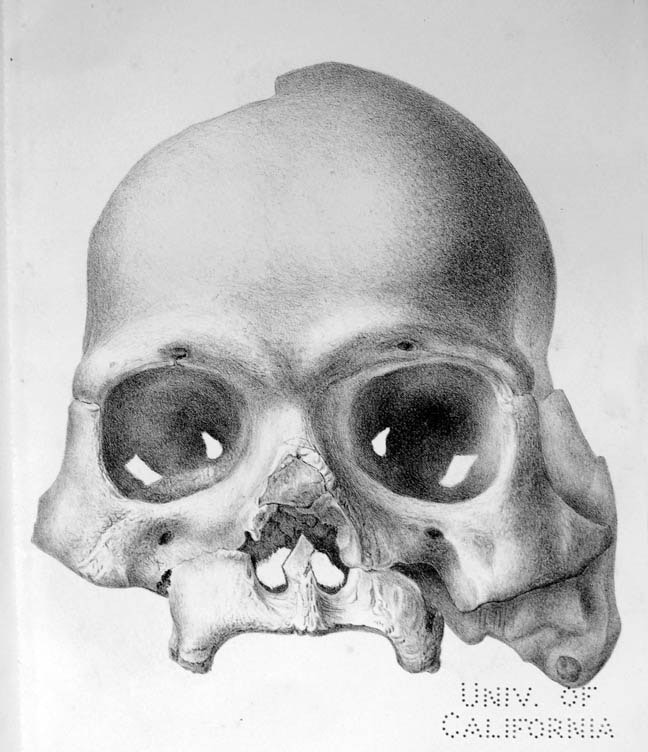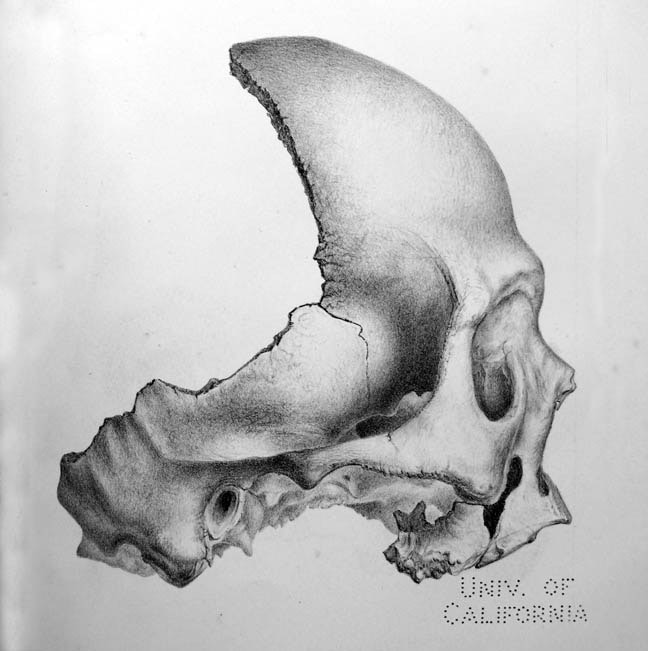Calaveras Skull

The Matteson shaft, on the western slopes of Bald Hill, near Angels Camp, was reportedly sunk in 1866 by James Matteson, a blacksmith from Illinois. Although never reaching paydirt in its earlier years, the Matteson shaft is famous in history as the location of the “Calaveras Skull” hoax. According to one account, the skull was discovered in the Calaveras Central (Victor/Reiner) shaft (1), but as that shaft was not sunk until 1895, that appears unlikely. Boutwell (2) agreed with this theory, while others, including historian R. Coke Wood, placed its discovery in the Matteson. As only the McElroy and Matteson shafts were depicted on the 1872 map, and neither near the later Victor/Reiner, it couldn’t have been in that shaft.
A recently published account, however, places the discovery in the McElroy shaft. In a reminiscensce by George Stickle of Angels Camp (who was there at the time) and told to Edna Bryan Buckbee, Jim Matteson placed the skull in McElroy’s mine. The subject of continuing scientific arguments, the Calaveras Skull was “discovered” in 1866 by Matteson in the Pliocene geological formation. Prominent geologists and anthropologists from several universities examined the skull and determined it to be that of an early man. After further study it was discovered to be not more than 50 years of age and a major hoax perpetrated upon State Geologist J.C. Whitney and others.

The skull had been removed from a Native American burial site at Dead Man’s Spring in Salt Spring Valley by Dr. William Kelly and given to Philip Scribner, an Angels Camp druggist, who planned to send it to Dr. Jones of Murphys as a joke. Meanwhile, Ross Coon, a local prankster, heard of the skull and cooked up the hoax. As recalled:
Professor Whitney and Dr. Jones rode to Angels Camp one evening, paying a visit to Jim McElroy’s deep diggings. They found themselves descending a shaft in a large iron bucket. The shaft was dripping water, down under in a drift they found Jim Matteson digging in a “pay” streak and while the professor and the doctor stood by watching, Jim’s pick brought to light a badly discolored old skull. At once, the professor evincing surprise and pleasure froze, while Doctor Jones, overjoyed, commented knowingly on the rareness of the specimen. Fitting, thought Dr. Jones, that is should be found in the bed of an archaic river (3).
Believing in its antiquity, Professor Whitney took the skull to the Smithsonian Institution in Washington, D.C., where it was eventually discovered to be of recent age. It was so well publicized, however, that Bret Harte composed his poem, "An Ode to the Pliocens Skull," about the discovery. The skull now resides at the Peabody Museum, Harvard University, Cambridge, Massachusetts.
1. Mineral Insustries Survey of the United States. Mines of the Southern Mother Lode Region, Calaveras County, Julihn, C.E.; F.W. Horton, Washington, D.C., (1938)
2. The Tertiary Gravels of the Sierra Nevada of California, Lindgren, Waldemar, Washington, D.C., (1911)
3. Calaveras County Gold Rush Stories, Buckbee, Edna Bryan, San Andreas, Ca, (2005)
